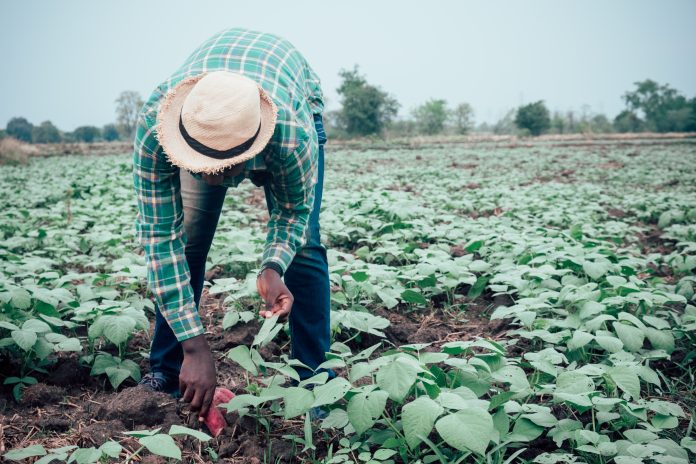
Chris Henderson, Head of Agriculture, Influence and Impact at Practical Action, explores the role of technology in the success of smallholder agriculture in Africa
More people in the world rely on agriculture for their survival than any other occupation. In Africa alone, there are an estimated 33 million smallholder farms, and the farmers that live on them contribute up to 70% of the food supply. (1) But three-quarters of the world’s poorest people are also farmers, which means that despite its importance, it simply isn’t working for a very large number of people – mostly smallholder farmers. The conclusion is that the best way to address rural poverty would be to transform the relationship between smallholder farmers and consumers – create a win-win between these essential producers and those who need the product of their work. For example, healthy smallholder dominated rural economies that provide safe, nutritious and affordable food to local towns and cities.
The vision sounds simple and in this remarkable technological age, many people feel that technology could drive that change. In many ways we agree, technology does have a vital role to play, but our experience has shown that sustained and inclusive change requires more than access to technology. It requires building the capacity and confidence of the people who need change – in this case, smallholder farmers – so they can innovate, plan and implement better ways of farming and using their resources. Our recent policy brief, Agricultural Adaptation to Climate Change, explains why co-generation of ideas, technologies and practices is so important if adaptation is going to take place where it is needed, by those who need it.
The dilemma: To use or not use, GMOs
Perhaps impatient with the pace of change, or lured by the dramatic outputs made possible by biotechnology, many researchers and policy makers think that genetically modified crops should be included in strategies to combat climate change, hunger and rural poverty. Indeed, when presented with data showing the latest yields, or drought tolerance, or the ability to resist pests and diseases, or nutritive value, the temptation is clear. But countering every argument to use GM, there are strong arguments and concerns over unforeseen or unintended consequences. This polarised debate about whether to include or omit GMOs, has challenged everyone, including practitioners like us. It is difficult to make an enduring moral or technical judgment on whether or not, or how, to work with GMOs because the matter is complex, the technology is rapidly changing, and there are well- reasoned arguments on all sides.
A pragmatic way forward
To rather ask, what type of technology is needed to achieve the change we want to see – in our case agriculture that works for struggling smallholder farmers. We, therefore, focus on technologies and practices that are accessible and low risk to smallholders and that do not reduce biodiversity or damage their soils, land or water. Doing this helps us ensure that the technologies or practices that farmers use do not damage the ecosystem. As with regenerative agriculture, such approaches protect, maintain or improve biodiversity, soils and the landscape. Increased and sustainable productivity comes from looking after the ecosystems within farms and across watersheds. It is an approach to agriculture that works for rural people and the planet.
To enable change at scale, we look for technologies that use or build on, the assets that rural people already have – i.e. their land, labour, crops, animals, forests, water, social groups, networks and local and indigenous knowledge.
Through our work, we have numerous examples of doing this to improve rural livelihoods whilst adapting to the changing climate in many countries. These include: multi-layer coffee agroforestry in the tropical hills of Peru; conservation agriculture combined with farmer-managed seed systems in marginal areas of Zimbabwe; community-based land and water management (across watersheds) in Sudan; ‘weather boards’ that combine agro-advisories with market information and flood early warning in coastal Bangladesh; and solar-powered irrigation in marginal rainfed areas of Africa.
A specific example of our approach is the Transforming Rural Economies and Youth Livelihoods (TREYL) project in Kenya. This long-term project supported by the IKEA Foundation is demonstrating that regenerative agriculture can create viable business opportunities for young people and thriving local economies. In it, we are working with three value chains – poultry, horticulture and groundnut – to build capacity and facilitate the development of the market systems to drive change.
In conclusion, investment in building the capacity and confidence needed for rural people and communities to innovate, plan and implement is as essential as the technologies themselves.
Regarding ‘which technologies’, policy-makers and investors should not ignore the massive potential for improving productivity and resilience that can come from protecting, managing and building local natural capital – assets smallholder farmers already have.
As mentioned in the Policy Brief, Agricultural Adaptation to Climate Change:
“Supporting adaptation that is planned and led by communities themselves will strengthen local agriculture, food systems, and economies, and will make rural populations and countries resilient for generations to come.”
Editor’s Recommended Articles





More Stories
Common Mistakes To Avoid While Choosing Bolt Manufacturers
Computer and Technology Today
The Reasons Agriculture is Important